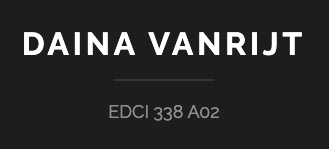“Everyone loves talking about themselves, […] everyone loves talking about what they are passionate about and once you give someone a platform […] it’s something that I think is tempting to everyone.”
MILLER. (2021). EDCI PODCAST – 2021-10-24 Mo Amir [YouTube Video]. In YouTube. https://www.youtube.com/watch?v=LgoDet6pwaI
Using PLN’s to engage business …
I once had poor service from a local service provider that also used social media — Facebook — to attract business and offer feedback to customers. I had used the product before and had history with the company, so I was surprised by the quality of the service and the response I received when I had phoned in to discuss my dissatisfaction. They were dismissive and seemed to put the blame on me. After the phone call, I went to their social media page on Facebook and began to explain, in great detail, the situation as I had experienced it and also posted a rating of their business on Google. Within a day I received a message in Facebook Messenger apologizing for the situation and then offering a discount for my next purchase. I then had a chance to engage with them again and explain my shock and dissatisfaction — especially as a repeat customer. It all worked out well and I still frequent the shop.
For me, the experience represents how powerful individuals can become in a flash within a networked society.
Career opportunities through PLN’s
Network society is the “interface between economics, culture, and technology and centered on the predominance of knowledge intensity and innovation content to maintain competitive advantage.”
Del Giudice, M. (2014a). From Information Society to Network Society: The Challenge. In Social Media and Emerging Economies: Technological, Cultural and Economic Implications (pp. 71–83). Springer. https://link-springer-com.ezproxy.library.uvic.ca/content/pdf/10.1007%2F978-3-319-02490-5.pdf
My partner and I were considering opening our own early childcare/cafe facility and by joining a few parent groups and local business forums we were able to learn very quickly that it was clearly a viable option for us. There is clearly interest in the community, access to funding, and lease space as well. This was all discovered within a few days of exploring websites for local businesses, Facebook, Instagram, and Twitter.
Relationships & PLNs
My partner and I have travelled and lived in a number of areas far from friends and family. Without Facebook, FaceTime, WhatsApp, Skype, Messenger, and the like, we would not have been able to stay in contact all these years.
I have been able to stay close with friends from high school and college. My partner still reaches out to people he grew up with from Nova Scotia.
Using digital media has enabled us to maintain and foster relationships that would likely have deteriorated over these past ten years, had we not had access to it.


Recent Comments